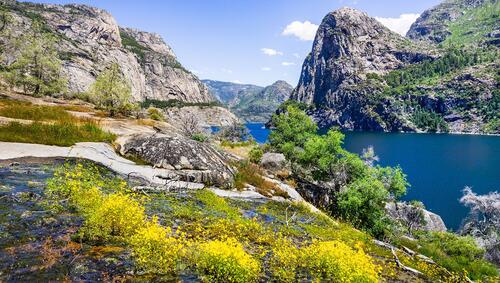Come spring, wildflowers begin peeking out from their blankets of snow, greeting the world with bright colors and whimsical silhouettes. The nation’s national parks are some of the best places to witness this seasonal phenomena from Smoky Mountains National Park’s flame azaleas to carpets of lavender lupines in Glacier National Park. Wildflowers are best appreciated from the trail and anthophiles should be sure not to venture off the path or disturb the flowers, despite how tempting it may be. Those seeking these tiny botanical wonders will be delighted by a visit to one of these best national parks for spring blooms.
Great Smoky Mountains National Park
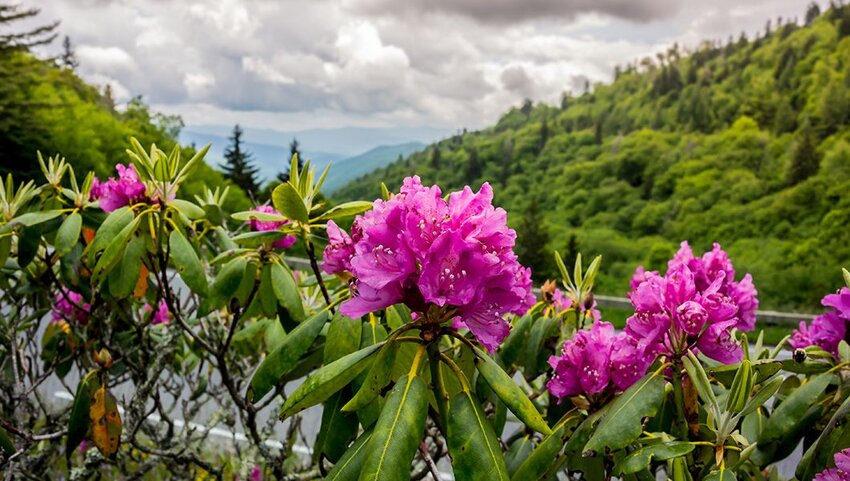
The oldest mountains in the United States, the Smokies as they’re affectionately called, have worn down to mere hills over thousands of years, creating the perfect landscape for rolling meadows and scenic balds. The rare fire azaleas that begin to bud in early spring at lower altitudes, and in the summer in the park’s balds, showcase a variety of hues, from brilliant red to snow white. Gregory and Andrews Bald are two of the best places to witness these blooms, which punctuate the already sweeping views and undulating mountains.
Aside from azaleas, Great Smoky Mountains National Park is also famous for its rhododendron forests, studded with beautifully perfumed flowers beginning in early May. Catawba rhododendrons can even be viewed in a flash of fuschia from the Blue Ridge Parkway, a famous route that winds through the misty mountain scenery. The annual Wildflower Pilgrimage has been a calendar marker for 73 years and helps educate the public on wildflowers and their preservation among many other facets of the park's flora and fauna.
Glacier National Park
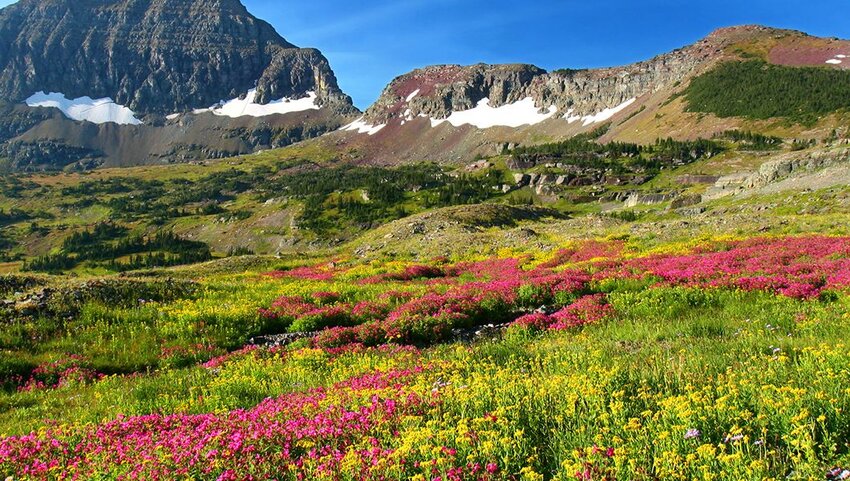
Straddling the border between Canada and the United States, Glacier National Park is buried in snow for its lengthy winter, but meadows begin to wake from their slumber in June and July. Born from the ice comes the wildflower season in Glacier, one of the most beautiful natural phenomena in the park and the perfect complement to its jaw-dropping landscape. Visitors can expect to see fields of mountain lupine, glacier lilies, clematis, and purple asters carpeting the alpine meadows that are tucked between Glacier National Park's towering peaks. Take the Going-to-the-Sun Road for epic views and stop off in the glacial valleys you see along the way for wildflower viewing in the shadows of snow capped peaks. While blooms are thickest in the middle of summer, spring visitors will be treated to a myriad of early blossoms without having to fight the hordes.
Saguaro National Park
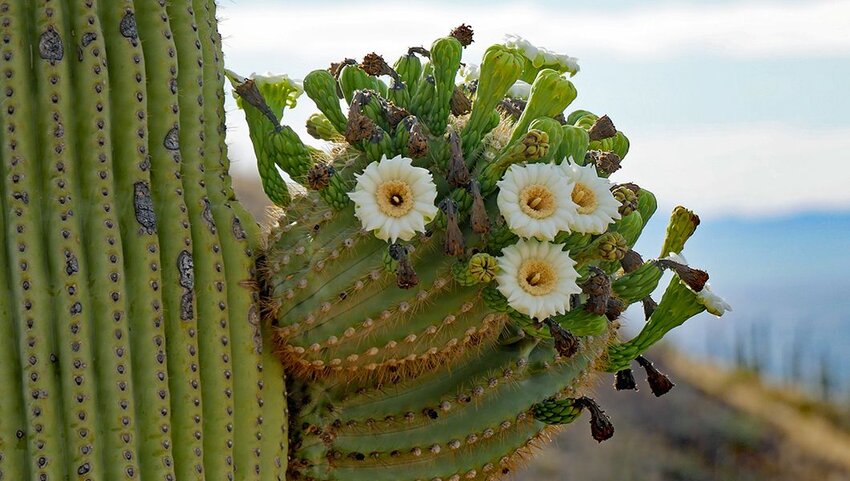
Anthophiles might not expect the Sonoran Desert to be a destination for wildflowers but Saguaro National Park seems to defy nature. Winter rains, although sparse, give way to gorgeous blooms as the climate begins to warm in early spring and the park's fluorescent dainties start to sprout. The park’s namesake, the stately and handsome saguaro cacti, grow to be well over a hundred years old and are crowned each spring with a wreath of pale blooms. Saguaros will start to produce flowers at 35 years of age, meaning that they wear their botanical jewels for most of their lives. Aside from these legendary succulents, Saguaro National Park is also home to saffron California poppies and rosy desert four o’clock among other flowering cacti like prickly pear and the hedgehog cactus. Wander down the Freeman Homestead Trail for an up-close look at established saguaros, their blooms, and a pioneer home to boot. If you’re lucky you might see some of the creatures that call the cacti home, like great horned owls, peering from inside the saguaros.
Yosemite National Park
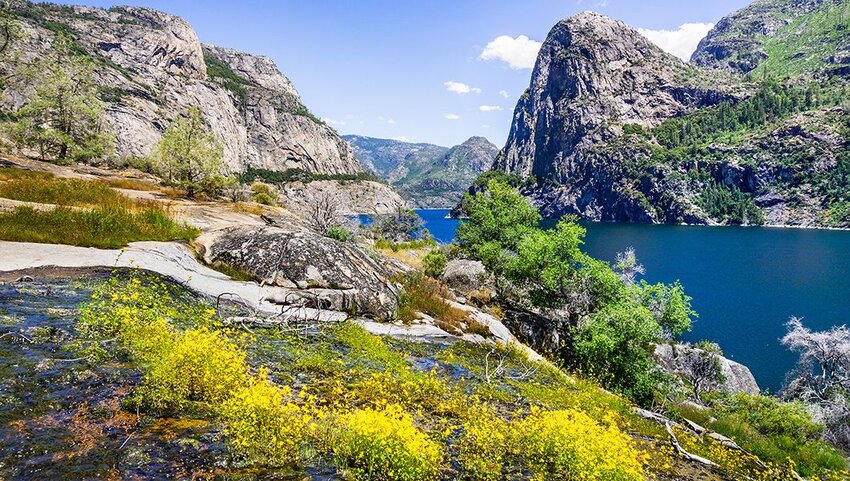
From rushing waterfalls to burbling brooks wreathed in wildflowers, spring might be the best time to visit Yosemite National Park. As the snow begins to melt in the higher elevations, lower areas of Yosemite begin to see their first wildflowers, which make their much-anticipated appearance by late March. Although heavy snow can be prohibitive in spring, upper elevation areas of Yosemite along Glacier Point Road reveal mystifying botanical wonders like the snow plant, a tiny tower of pink blossoms peeking through the tufts of ice. The McGurk Meadow trail is one of the best hikes to see a bouquet of wildflowers from shooting stars to Sierra forget-me-nots. Be sure to arrive in Yosemite Valley early to watch the sunlight creep over the mountain tops, showering the wildflower meadows in golden light.
Sequoia National Park
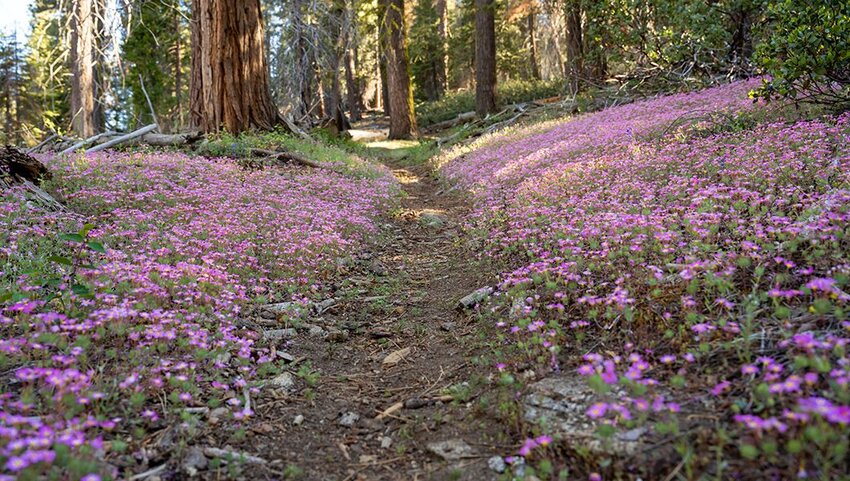
If you're impatient for colorful blooms, rejoice, Sequoia National Park offers a colorful array of buds throughout the year. Sequoia’s varying elevation means that wildflowers are blooming in this dynamic natural environment for most of the year, beginning as early as February and continuing all the way through September. This park is home to the tallest mountain in the lower 48 states, Mt. Whitney, a stark difference from the woodland foothills and Mediterranean climate that exists thousands of feet lower in elevation. Nestled among the towering giants that call Sequoia home, the sheer size of the redwood trees creates a beautiful juxtaposition between a quilt of tiny wildflowers and shadowy canopies of the soaring trees. Visitors will feel as though they’ve stepped into a fairy tale with blankets of lupine sprouting among the ruddy tree trunks and butterflies floating lazily through the mid-alpine air. The hike up Mt. Whitney, while certainly not for the faint of heart, allows trekkers to experience many of the park's distinct ecosystems and witness dozens of differing wildflowers.

